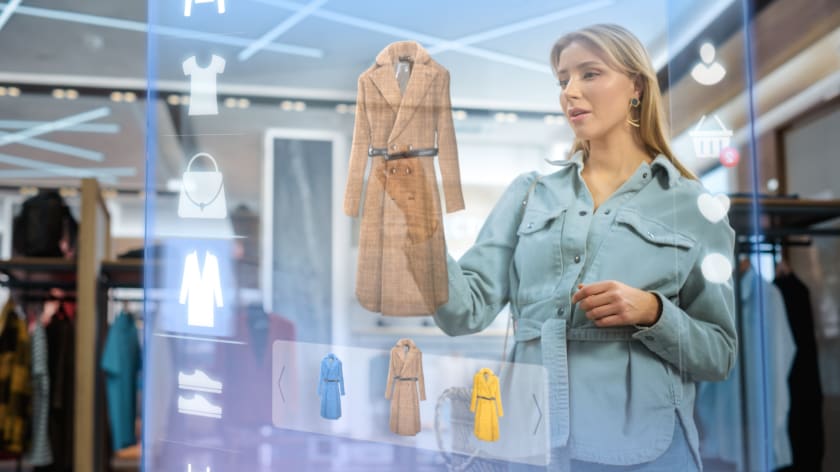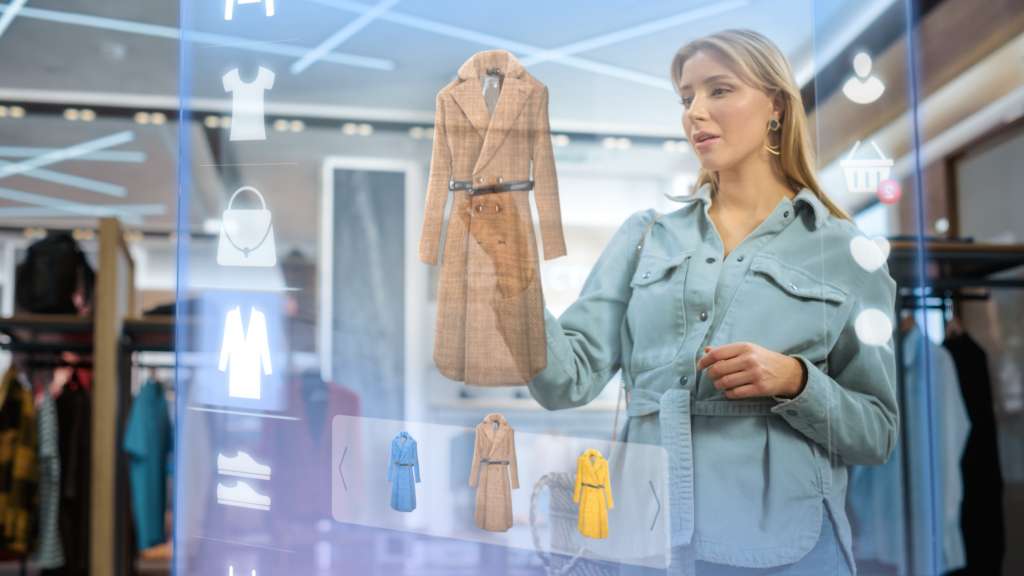Technology is the Way Forward for Fashion Brands



Summary: New digital technologies enable better and seamless communication along the fashion supply chain. Adoption of these technologies should translate into better business for brands, manufacturers, and suppliers.
Fashion thrives on creativity—from designing to the store experience. Recent technological advancements offer a wonderful opportunity to enhance creativity and drive innovation across the fashion value chain. Though these tech developments could be baffling for fashion companies, it undoubtedly has great potential to optimize production, significantly impacting the bottom line of the companies.
Fashion companies are facing three opportunities currently—-sustainability, consumer engagement, and digitalization. Ready adoption of the following technologies shall define their growth trajectory.
New materials for sustainable products
Brands are harnessing technology like never before to reduce their carbon footprints. They are coming up with new materials that can be recycled and regenerated. The abundance of technological growth is aiding not only the generation of new materials, but the faster lab-to-market cycle has made brands bolder and more confident in driving innovation. H&M, for instance, has come out with Cupro-blend, a re-generated material made from cotton waste that can be an alternative to silk. Similarly, Hermes is toying with mushroom-based leather for its famous Birkin bags.
The fashion play in Metaverse

Who would have thought that one’s digital avatar can be dressed up; Metaverse and Web 3 technologies are promising to make this possible. The world is moving towards having a digital existence, apart from the real one. Consumers tomorrow may like to dress up their digital avatars. Balenciaga, Prada, and Thom Browne have tied up with Meta for creating a Meta Shop for consumers’ digital avatars. There is a bigger game developing out there considering that Meta owns Facebook, Instagram, and Messenger as well. Companies, big and small, need to keep a watch on this developing space.
Business analytics for smarter inventory management
The recent pandemic unveiled the criticality of maintaining the right inventory to keep the cost low and meet business exigencies. Brands are often smelling for clues to customer preferences, which can be as nuanced as paradoxical. Business analytics has the capability to sift through various sales channels across platforms to throw up insights into consumer trends. A data-driven product development makes it easy for companies to maintain the inventory mix and keep it agile to the dynamic market conditions. Technology is making the possibility of made-to-order garments, reducing the risk of unsold clothing.
IIOT for traceability in the supply chain
There has been consistent demand for traceability and transparency in the fashion supply chain as the raw materials and finished goods move through the complex, multilayer supply chain. The sensor-based technology called the Industrial Internet of Things (IIOT) is capable of feeding real-time data to monitor the quality and speed of goods flowing up and down the chain.
A company called Eon group has created an operating model that allows manufacturers, recyclers, and consumers to access real-time information about the garment. On the shop floor, these connected devices can help machines talk to each other. A machine announcing its downtime way ahead of its time goes a long way in improving shopfloor efficiency.
AI and ML are helping optimize the production floor
There is a digital thread of data running across the fashion cycle. Technologies such as Artificial Intelligence (AI) and Machine Learning (ML) can make sense of the data by simply ingesting a large amount of data. They also have the ability to create a structure for validating the information by co-relating data from multiple sources. There are various compliances in the fashion value chain to meet the sustainability metrics. AI enhances and eases a brand’s ability to check the authenticity of data by the vendor.
Blockchain to deal with counterfeits

The information stored in blocks, which is accessible to the partners in the value chain, provides the security cover to the entire communication. Blockchain-powered systems that create a trusted evidence-based chain of custody are also being used by brands such as Louis Vuitton to deal with counterfeits. The product history made available to consumers at the time of purchase will play a critical role in plugging profit leakages.
In fact, IIOT, AI, ML, and Blockchain form a formidable traceability tech stack for fashion companies.
AR is redefining consumer experiences
Augmented Reality (AR) is transforming the way brands connect and engage with their customers. The technology enables consumers to experience how the products look on them from the comfort of their homes. AR clothing is also getting close to reality with a spate of innovations. For fashion brands, this could increase online conversion and decrease e-commerce returns.
3D printing for shorter lead time
The evolving 3D printing technologies or additive manufacturing have the potential to cut the lead time to the market. From footwear to clothes, 3D technology is aiding prototype development that leads to faster new product development, cutting the sampling time. It also cuts down on waste as only the amount of material that is needed is used for development purposes. As technology proliferates, it can be widely used in made-to-order products. Adidas, for instance, used this technology to develop mid-soles from used plastic bottles for its sneakers.
Automation to offset labor shortage
Robots are increasingly being deployed across warehouses and production floors where they take over repetitive and hazardous tasks. Co-robotics, where humans can work along with robots on a shopfloor, give speed and efficiency to the task. It also frees up human workers to focus on work that is more engaging and needs human attention.
Digital twin to reduce wastage
Creating a digital twin of fabric and testing its efficacy reduces a great deal of effort and wastage. Moreover, simulation is being used to anticipate any supply chain bottleneck before it actually surfaces. In re-designing the shop floor, a digital prototype is created and tested for its optimum functionality, saving valuable time and resources.
Technology is in Fashion

Technology can play a much bigger role than it is doing now, from demand forecasting to reducing supply chain wastages. In the coming months, the fashion industry should see a greater play for fashion and digital technology. For the actors to win here, speed and innovation in tech adoption shall be the key.
Key takeaway
- Creativity has never been in short supply in the fashion industry
- Innovation triggered by new technologies is going to take the industry forward from now on.
Fashinza uses digital technologies such as Artificial Intelligence for optimized production of apparel through its network of reliable suppliers.
Partner with Fashinza for a smooth manufacturing experience.



















